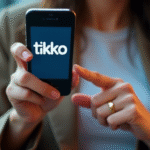What is Ethnography and Why Use it in Business?
Ethnography, traditionally linked to anthropology, involves observing people in their everyday environments to understand their behaviors, values, beliefs, and emotions. Instead of studying remote communities, ethnographers now investigate in supermarkets, cafes, offices, social media, and even video game sessions. This deep look uncovers patterns invisible to quantitative research methods.
For instance, while a survey might determine that consumers like artisanal coffee, ethnography reveals why: is it the ritual, the sense of community, or a quest for authenticity? This distinction is crucial for designing customer-centric experiences and strategies.
Ethnography and Business Ideas
When we think of businesses, we usually consider business models, idea validation, and technology. However, ethnographic understanding can be the first step to detect real needs and address unmet problems. In other words, ethnography not only helps sell better but also start better.
A good example is the reinvention of children’s toothbrushes. In 1996, an innovation consultant conducted field research for Oral-B to find out why kids disliked brushing their teeth. In-situ observation revealed that due to their limited manual dexterity, children held the brush by the fist rather than between the fingers, making thin handles uncomfortable to grip. This insight led Oral-B to develop the Squish Gripper, a child toothbrush with a wide, soft handle. The product was a sales success for 18 months and set a new standard for children’s toothbrushes.
The Consumer as a Subject, Not an Object
A common mistake in product design is treating consumers as statistics. Ethnography proposes the opposite: making them the protagonists. This perspective allows for co-creating solutions with users, not just for them. This is its immense potential for marketing and product development.
Here are some practical ways to bring ethnography into entrepreneurial practice:
- Participant Observation: Spend time in users’ environments, observing their interactions with a specific product or service without intervening.
- User Diaries: Ask people to record their experiences, frustrations, or emotions regarding a specific need for a few days.
- Ethnographic Interviews: Conduct open conversations in everyday spaces without rigid scripts to allow unexpected needs or desires to emerge.
- Experience Mapping: Create visual journeys of the customer from identifying a need to interacting with the product.
Digital Ethnography
Digital ethnography allows analysis of online relationships. For example, a company’s marketing department can study how consumers use digital platforms to share experiences and express concerns. Through digital ethnography (or netnography), conversations, hashtags, and memes circulating in networks can be observed to identify recurring themes and market trends.
This methodology captures not only what users say explicitly but also implicit meanings and social dynamics influencing their behavior. With this information, companies can design more appropriate support programs and foster better communication with their community.
Empathy as the Catalyst for Innovation
In a world obsessed with technological disruption, ethnography reminds us that the most powerful disruption can come from something deeply human: understanding others.
Instead of guessing what the customer needs, ethnography first invites us to listen and observe, then develop innovative proposals from empathy and understanding.






